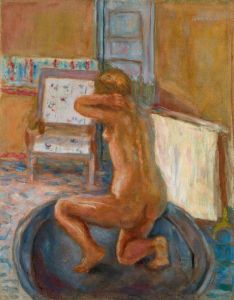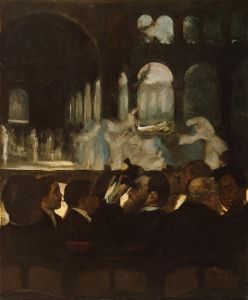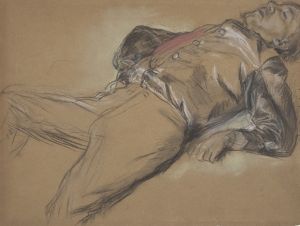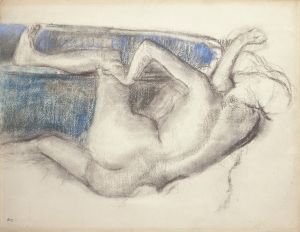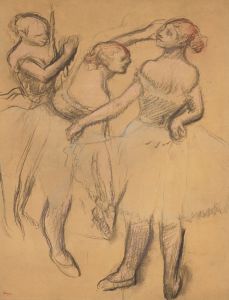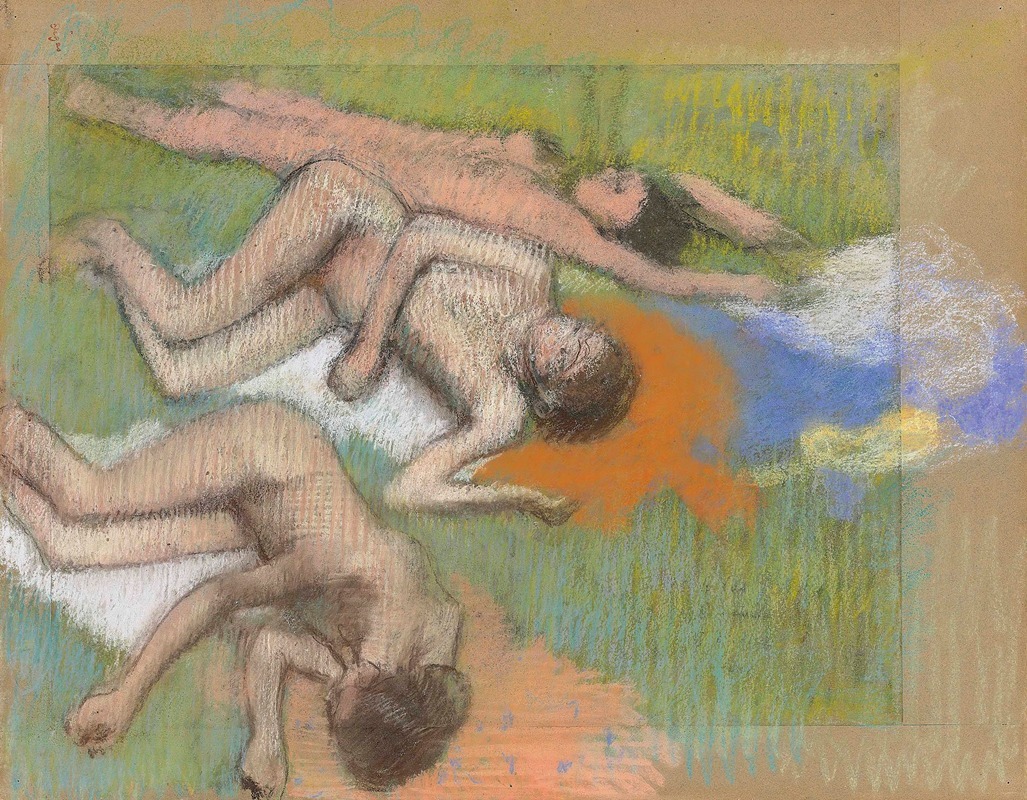
Après le bain, trois femmes nues
A hand-painted replica of Edgar Degas’s masterpiece Après le bain, trois femmes nues, meticulously crafted by professional artists to capture the true essence of the original. Each piece is created with museum-quality canvas and rare mineral pigments, carefully painted by experienced artists with delicate brushstrokes and rich, layered colors to perfectly recreate the texture of the original artwork. Unlike machine-printed reproductions, this hand-painted version brings the painting to life, infused with the artist’s emotions and skill in every stroke. Whether for personal collection or home decoration, it instantly elevates the artistic atmosphere of any space.
Edgar Degas, a prominent French artist known for his contributions to Impressionism, created the painting "Après le bain, trois femmes nues" (After the Bath, Three Nude Women) during the late 19th century. Degas is renowned for his innovative approach to depicting the human form, particularly in intimate and candid moments. His works often explore themes of modern life, movement, and the human body, with a particular focus on dancers, women, and scenes of everyday life.
"Après le bain, trois femmes nues" is a testament to Degas's fascination with the female form and his skill in capturing the subtleties of human anatomy and movement. The painting depicts three nude women engaged in the act of bathing, a subject that Degas revisited frequently in his oeuvre. This work exemplifies his interest in portraying women in private, unguarded moments, offering a glimpse into the personal and often unseen aspects of their lives.
Degas's technique in this painting reflects his mastery of both drawing and painting. He often employed a combination of mediums, including oil paints, pastels, and charcoal, to achieve a rich texture and depth in his works. The use of light and shadow in "Après le bain, trois femmes nues" highlights the contours and forms of the women's bodies, emphasizing their physicality and presence within the space. Degas's attention to detail and his ability to convey the softness and fluidity of skin and water demonstrate his keen observational skills and his dedication to realism.
The composition of the painting is carefully arranged to guide the viewer's eye across the canvas. The positioning of the women creates a dynamic interplay of lines and shapes, drawing attention to their interactions and the space they inhabit. Degas's choice of perspective and cropping adds an element of intimacy, as if the viewer is witnessing a private moment from a discreet vantage point.
Degas's portrayal of women in his bathers series, including "Après le bain, trois femmes nues," has been the subject of much scholarly discussion. Some art historians interpret these works as a reflection of the changing roles and perceptions of women in 19th-century society. Others view them as an exploration of the tension between public and private spheres, as well as the artist's own complex relationship with his subjects.
Throughout his career, Degas maintained a distinctive style that set him apart from his contemporaries. While associated with the Impressionist movement, he often diverged from its typical emphasis on plein air painting and vibrant color palettes. Instead, Degas focused on capturing the nuances of human expression and movement, often working in his studio and employing a more subdued color scheme.
"Après le bain, trois femmes nues" is a significant example of Degas's exploration of the female nude, a theme that occupied a central place in his artistic practice. The painting not only showcases his technical prowess but also offers insight into his enduring interest in the complexities of human form and the intimate moments of everyday life. As with many of Degas's works, this painting continues to be celebrated for its beauty, its depth of observation, and its contribution to the broader narrative of art history.






